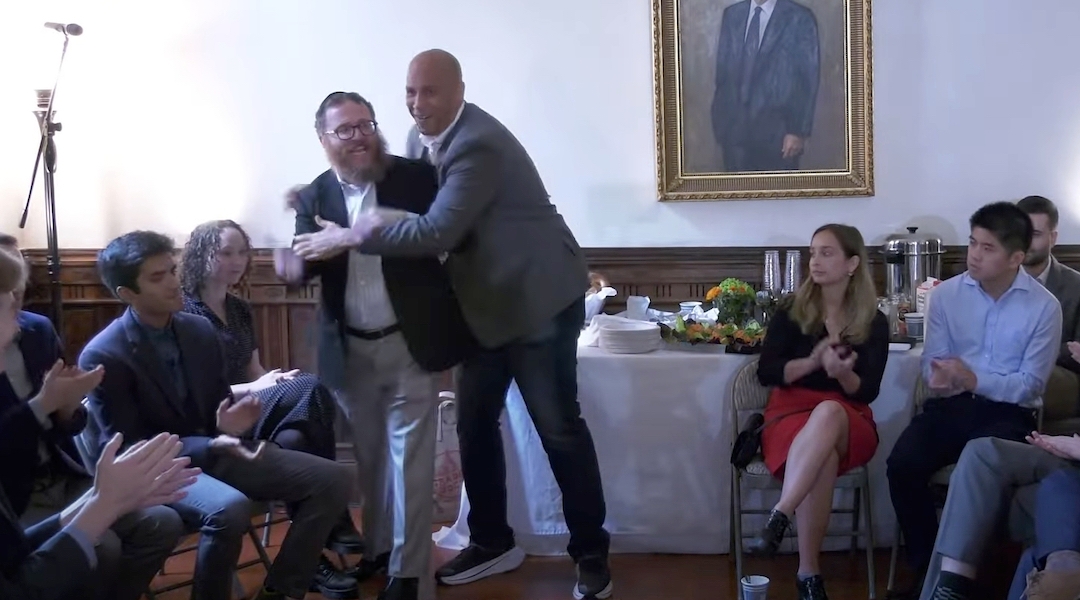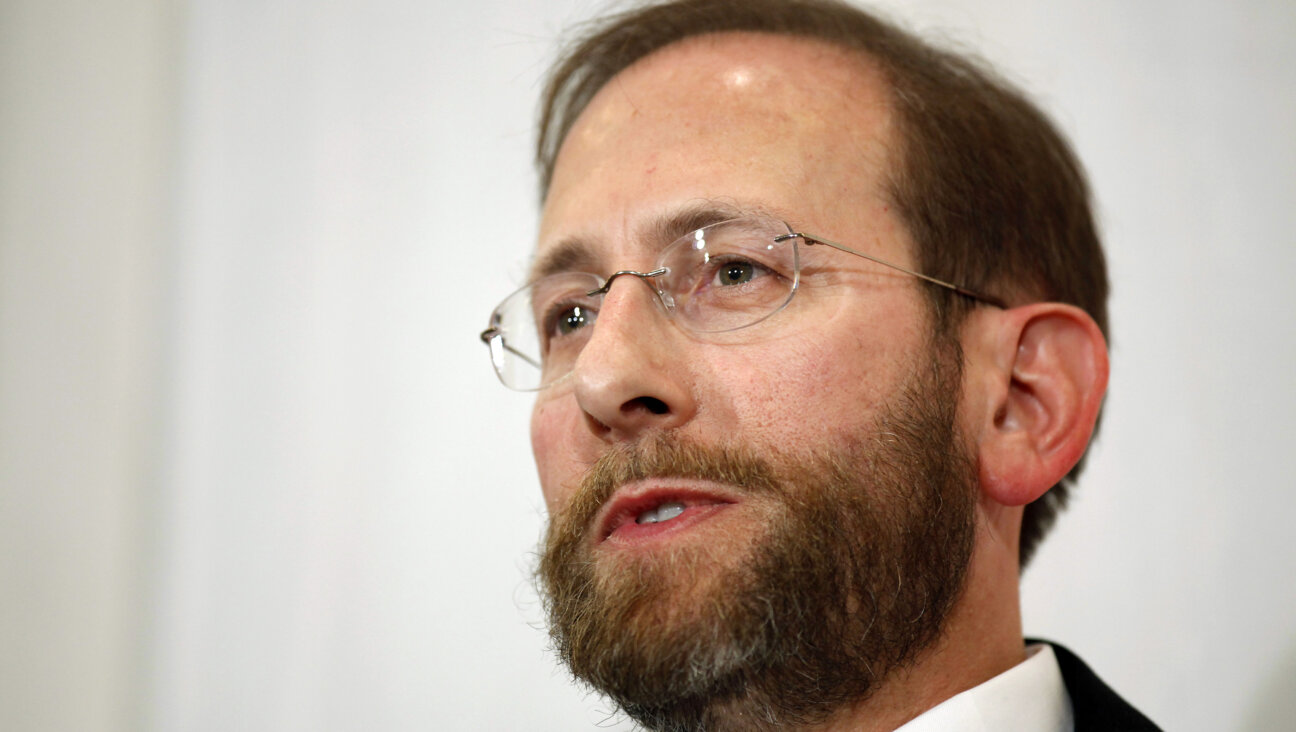A Duo of Artists Who Looked at The World From an Oblique Angle

Peacenik Politics: Pekar (left) in 2003, and Kupferberg in 1968. Image by GETTY IMAGES
Harvey Pekar and Tuli Kupferberg died on the same day, July 12, and shared much, including peacenik politics, a strong sense of humor and a passion to carve art out of the fragments of popular culture. But they were almost an American Jewish generation apart, a detail that now seems difficult to grasp entirely, but is still crucial.
Kupferberg, born in 1923, was a real bohemian of the pre-beatnik era, a hipster whose leap off a New York bridge in an attempted suicide famously appeared, without his name, in Allen Ginsberg’s seminal poem “Howl.” He once told me that he had become an anarchist in the mini-boom of postwar anti-bomb, anti-government sentiment among intellectuals and artists on both coasts. He recalled being a young man bitterly opposed, from the left, to Henry Wallace, the Progressive Party candidate of 1948. Meanwhile, Pekar, then 9, was following his mother’s lead, passing out Wallace leaflets in his Cleveland Jewish neighborhood. He shared his Bialystok-raised parents’ joy at the birth of Israel.
The two future artists were both shaped by the Depression and by Franklin Roosevelt, two key influences upon practically any American Jew of those years. But Kupferberg had briefly become a Trotskyist even before Roosevelt died, while Harvey remained, till the end of his life, at one with his family memory that the great leader had saved them all personally, as well as the country, from disaster.
Kupferberg and Pekar were both college dropouts — but with a difference. Bright and focused, born on Manhattan’s Lower East Side, Kupferberg graduated cum laude from Brooklyn College in 1944 (psychology and English), and hit the wall only as he began working on an advanced degree in sociology, at The New School. After that, as he recalled, he faced with equanimity a long and productive life as a luftmensch, a person who makes his living, as it were, “from the air.”
”Back
By contrast, in one of Pekar’s several autobiographical comic art books, “The Quitter,” he bitterly regrets dropping out of college after only two semesters in his native Cleveland. He couldn’t get his head around schoolwork, and slipped into bohemianism almost by accident. The two were evidently major jokesters as schoolchildren, which may have marked them out as a particular Jewish type, prepared to look at the world from an oblique angle when offered the possibility of getting friendly laughs.
Despite these differences, Kupferberg and Pekar were deeply interested intellectually, and even more deeply involved personally, in urbanism, the decay and sometime revival of the neighborhood for good or ill. Through his life’s work there, Kupferberg made himself into an iconic figure of the Lower East Side, latterly fighting gentrification, just as Pekar was forever in Cleveland, actually moving to one neighborhood from another across several decades, ahead of the bulldozers and the urban renewal that never renewed much of anything. Their work — in Kupferberg’s case, words, drawings and music — was full of neighborhood people, all types, storefronts, crowds, friends (in Harvey’s case, his own first two wives, who were often not so friendly) and a sensibility all their own.

American Splendor: Harvey Pekar?s autobiographical comic strip started in 1976 and continued almost until his death. (Art by Joseph Remnant from http://www.smithmag.net/pekarproject) Image by CouRTESY oF THE PEKAR PRoJECT
They hit upon art forms whose uniqueness will remain, long after their deaths, the signature of a time and place, hinting always, but in highly curious ways, at something larger.
Kupferberg began writing poetry early and, if he had agreed to the definition, would be rightly classified as a Beat Poet in what might be called the Ferlinghetti or City Lights school: humane, free form and uncensored, above all raging against the madness of the Cold War arms race. In 1958, with his future wife, Sylvia Topp, he brought out Birth, a literary magazine that would publish the likes of LeRoi Jones and Diane di Prima, among others. Living off B Street, selling “1001 Ways To Live Without Working,” a beatnik humor book of his own, on the street, he ran into another poet, Ed Sanders.
The two of them opened the Peace Eye Bookstore in 1964, and were the most famous of The Fugs, one of the delightfully outrageous rock groups of the coming era. The Fugs performed endlessly at peace demonstrations and other venues. Paul McCartney foiled autograph hounds by signing himself “Tuli Kupferberg.” The Fugs wore themselves out by 1970, but Kupferberg went on and on, performing in many ways, often as inauspiciously as sending out packets of his photocopied cartoons to friends (I was one of them). Peace and resistance never failed as themes.
Pekar famously met cartoonist R. Crumb in the early 1960s, and gradually came to the conclusion that anything, even the Russian novels he loved so much, could be done in comic form. His long-running series of comics, “American Splendor,” was launched in 1976 (he, too, began as a self-publisher) and continued on almost until his death, in one format or another. Pekar went through dozens of artists, giving them dialogue and precise directions (in the form of comic panels with stick figures). He couldn’t pay them much: Making his own living never ceased to be a struggle. But the award-winning, 2003 film “American Splendor” rendered him a public personality, especially on campus, where lecture fees and book sales finally gave him a modicum of financial security. It was long overdue.
One of Kupferberg’s own favorite strips (I received it several times) showed a grandmother with Kupferberg as a child. In one panel he is whistling; in the next, Granny warns, “Yidishe kinder fayfn nit!” [“Jewish children don’t whistle!”] It was obviously a fond, oddball memory of another time. Pekar also had his connection to the culture of the mameloshn, or mother tongue. In the months before his death, Pekar was working (with me and a handful of artists) on “Yiddishland,” a book that begins with him and his Yiddish-speaking grandfather in Cleveland around 1944. He still wanted to tell his vanished relatives that he had become a Yidishe shrayber, a continuator of Yiddishkeit, and he had, in his own way, reached that goal before the end came. Neither of these deeply Jewish artists is likely to be forgotten soon.
Paul Buhle edited several comics in collaboration with Harvey Pekar, including The Beats. They collaborated on Yiddishland, to be published next Spring by Abrams ComicArts. Contact Paul Buhle at [email protected]
The Forward is free to read, but it isn’t free to produce

I hope you appreciated this article. Before you go, I’d like to ask you to please support the Forward.
Now more than ever, American Jews need independent news they can trust, with reporting driven by truth, not ideology. We serve you, not any ideological agenda.
At a time when other newsrooms are closing or cutting back, the Forward has removed its paywall and invested additional resources to report on the ground from Israel and around the U.S. on the impact of the war, rising antisemitism and polarized discourse.
This is a great time to support independent Jewish journalism you rely on. Make a gift today!
— Rachel Fishman Feddersen, Publisher and CEO
Support our mission to tell the Jewish story fully and fairly.
Most Popular
- 1
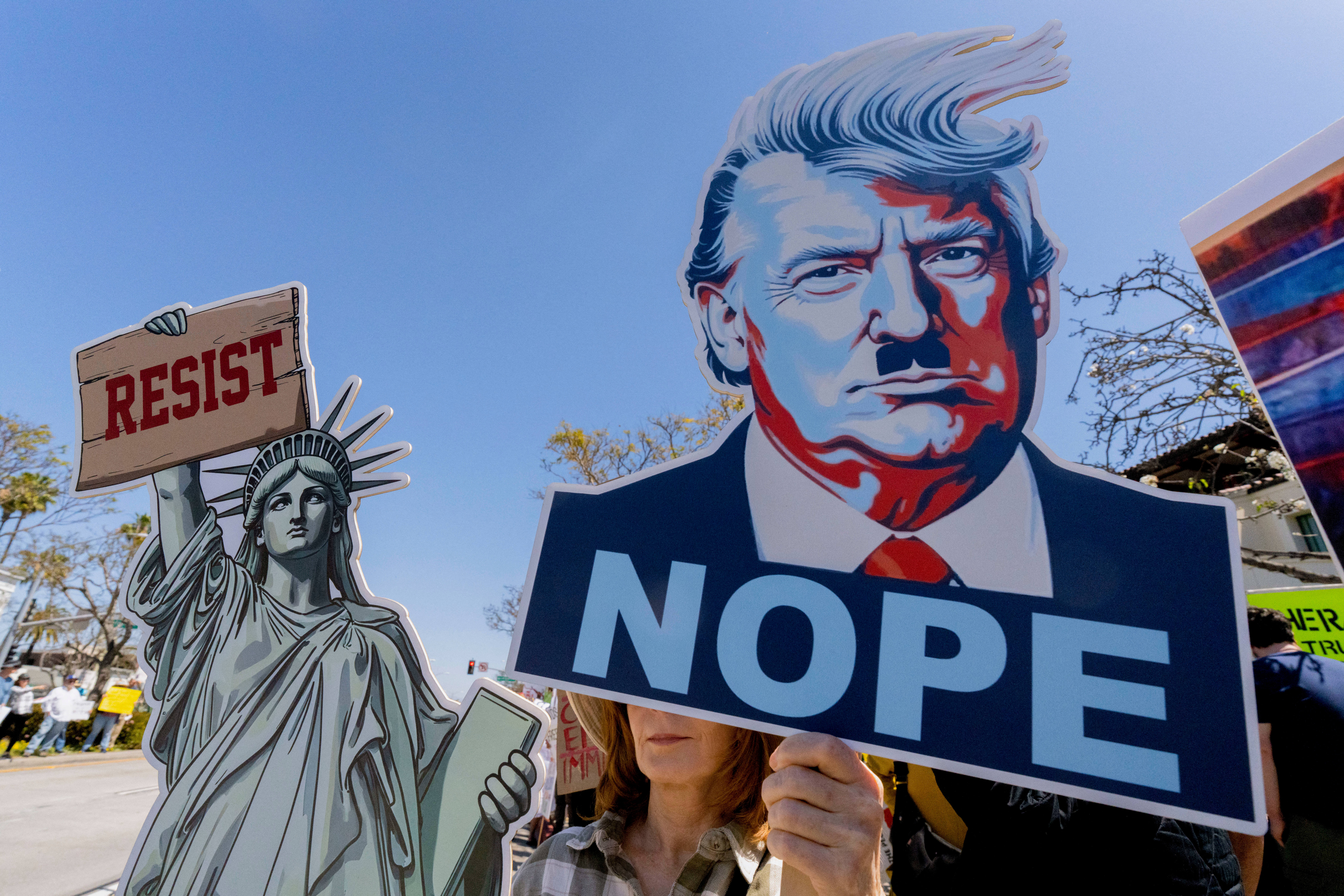
Opinion The dangerous Nazi legend behind Trump’s ruthless grab for power
- 2
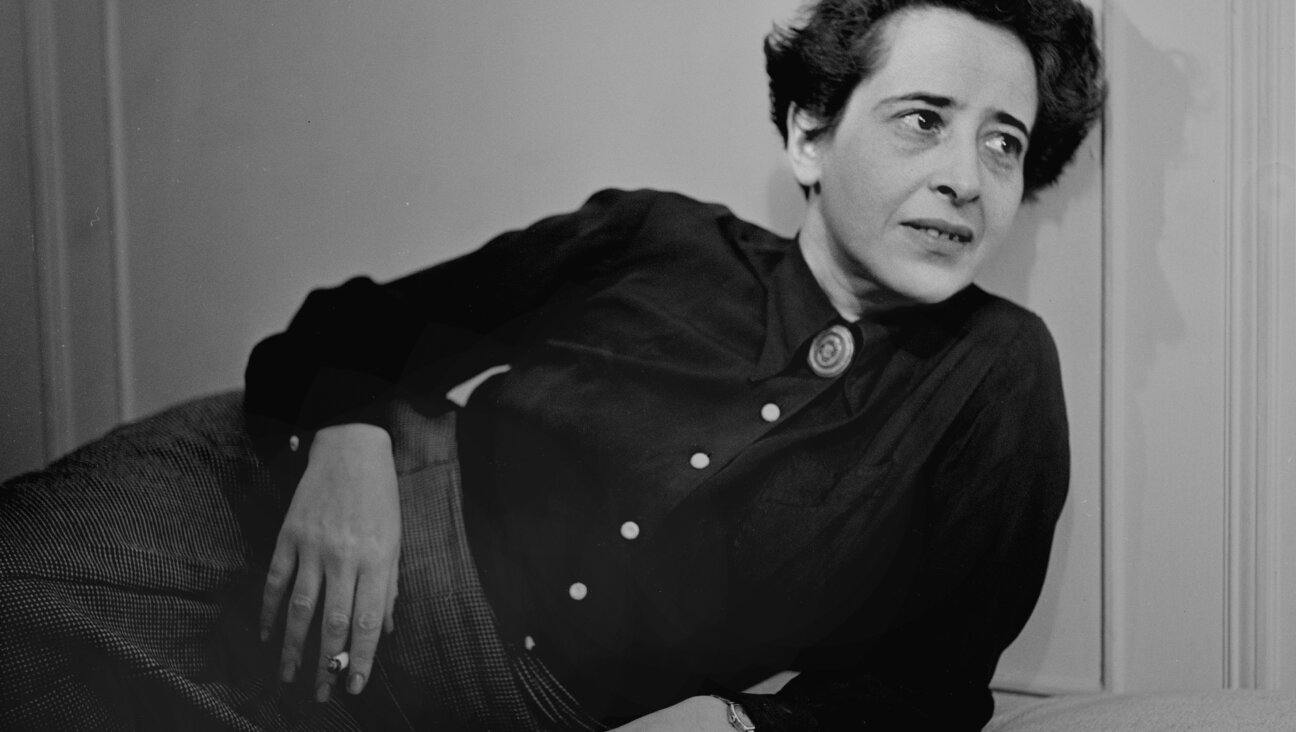
Culture Trump wants to honor Hannah Arendt in a ‘Garden of American Heroes.’ Is this a joke?
- 3
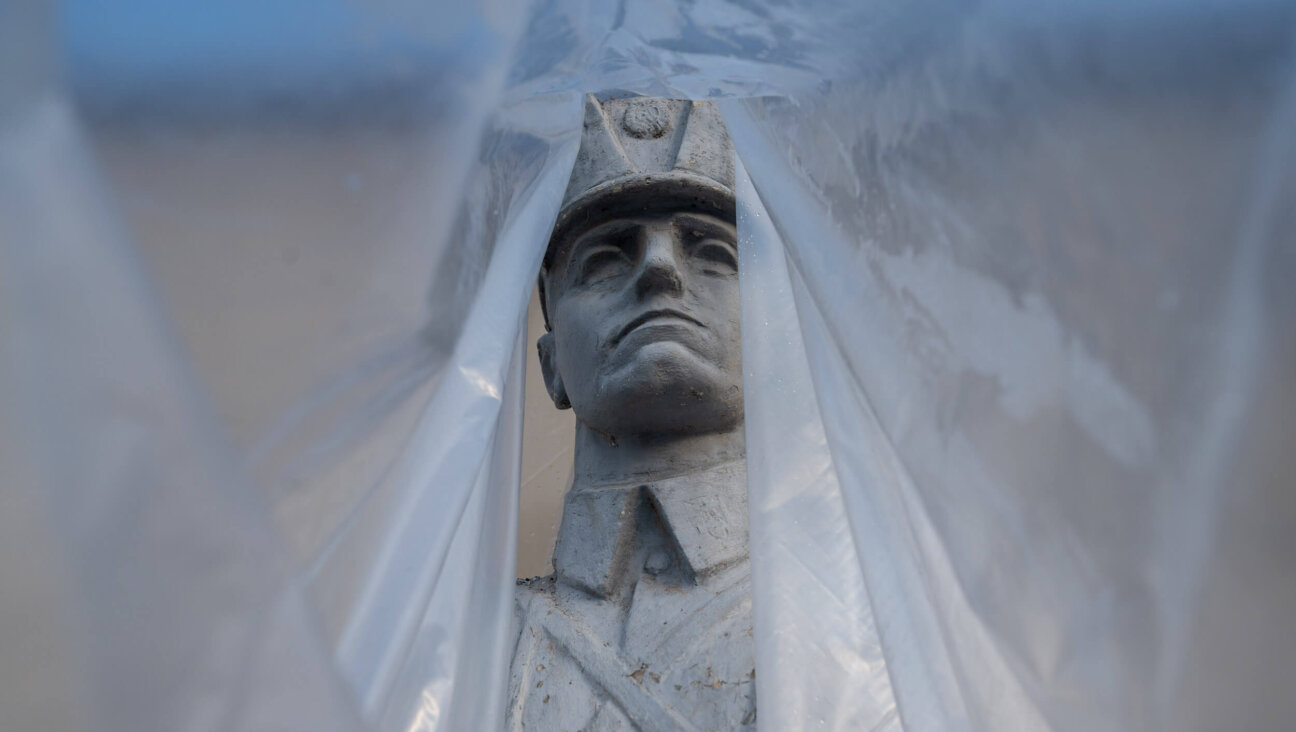
Opinion A Holocaust perpetrator was just celebrated on US soil. I think I know why no one objected.
- 4

Culture Did this Jewish literary titan have the right idea about Harry Potter and J.K. Rowling after all?
In Case You Missed It
-

Fast Forward Protesters clash in Crown Heights as Ben-Gvir visits Chabad headquarters
-

Yiddish ווידעאָ: היסטאָריקער שמואל קאַסאָוו דערציילט מעשׂיות פֿון זײַן משפּחה־געשיכטעVIDEO: Historian Samuel Kassow shares stories about his family history
דער ווידעאָ איז טשיקאַווע סײַ פֿאַרן אינהאַלט סײַ פֿאַר קאַסאָווס נאַטירלעכן ליטוויש־ייִדיש
-
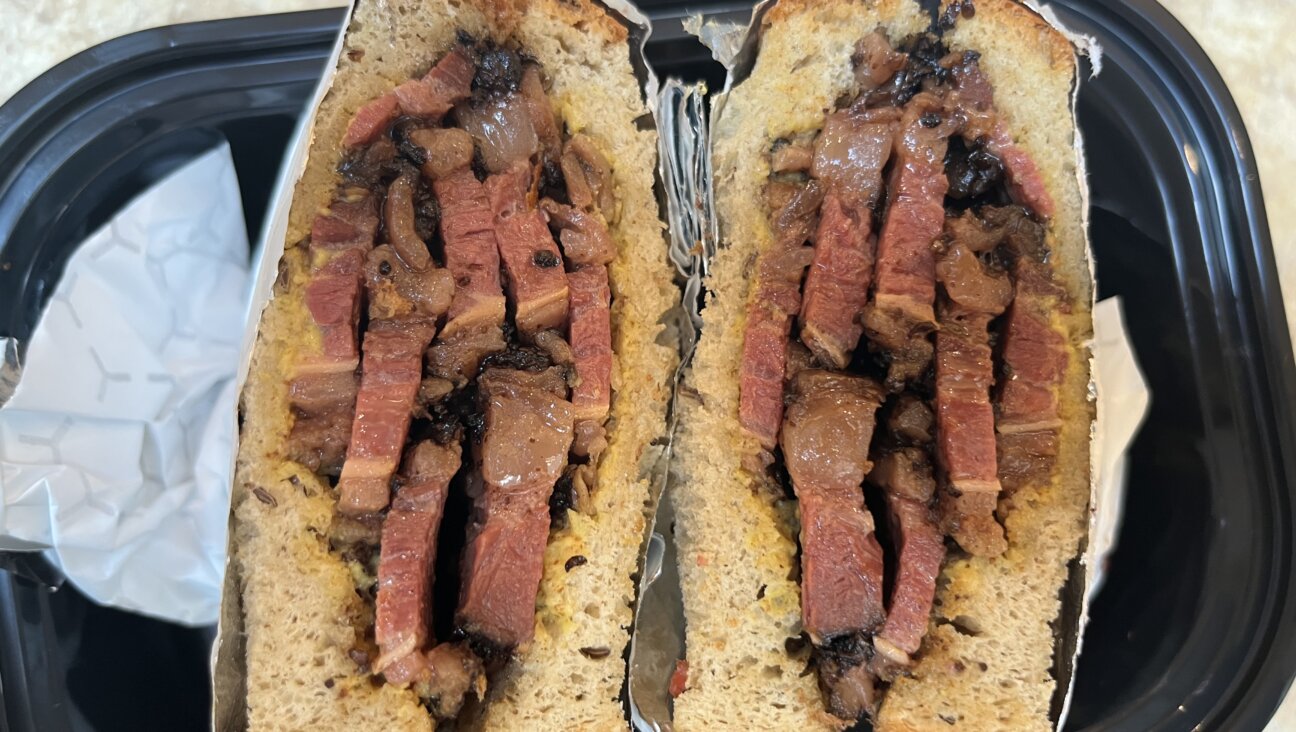
Culture I have seen the future of America — in a pastrami sandwich in Queens
-

Culture Trump wants to honor Hannah Arendt in a ‘Garden of American Heroes.’ Is this a joke?
-
Shop the Forward Store
100% of profits support our journalism
Republish This Story
Please read before republishing
We’re happy to make this story available to republish for free, unless it originated with JTA, Haaretz or another publication (as indicated on the article) and as long as you follow our guidelines.
You must comply with the following:
- Credit the Forward
- Retain our pixel
- Preserve our canonical link in Google search
- Add a noindex tag in Google search
See our full guidelines for more information, and this guide for detail about canonical URLs.
To republish, copy the HTML by clicking on the yellow button to the right; it includes our tracking pixel, all paragraph styles and hyperlinks, the author byline and credit to the Forward. It does not include images; to avoid copyright violations, you must add them manually, following our guidelines. Please email us at [email protected], subject line “republish,” with any questions or to let us know what stories you’re picking up.







